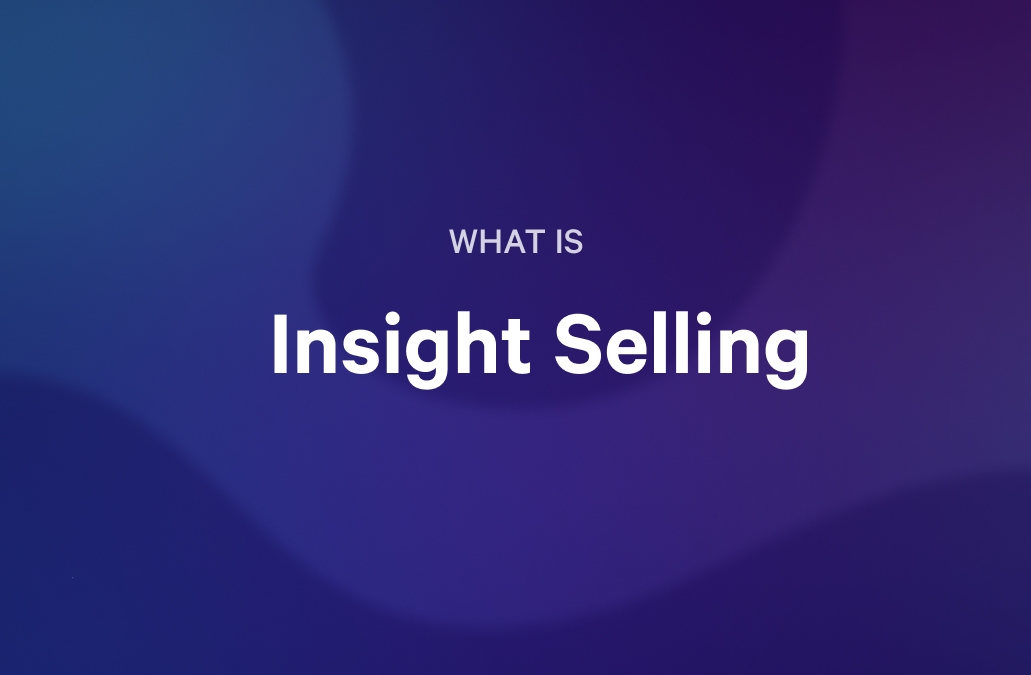We could tell you about how, as technology evolves, the way we sell technology needs to evolve too, but then we'd probably also need to explain that grass is still green, the sky is still blue, and water is still wet, so we'll save you that introduction to SaaS sales methodology and dive into all the ways to look at selling SaaS and how to determine which will work best for you.
Whether you're moving into a new role or your product roadmap is guiding you to evolve your sales process and approach your sales conversations differently, stick with us to learn more about how to think about your SaaS sales and ultimately win more deals.
Key Takeaways
- Selling SaaS is not the same as selling other products or services
- The SaaS market is getting more and more competitive, and differentiating yourself is becoming more challenging
- Using the right sales methodology for your SaaS product can increase your chances of closing deals and winning them more efficiently
- Don't be afraid to draw from any of the traditional sales methodologies to create a sales process that works best for you
What is a SaaS sales methodology?
A SaaS sales methodology is how you sell a SaaS product. It may involve qualifying prospects, presenting information about your products and solutions, or designing your sales process.
There are many sales methodologies work well for selling SaaS. But if you want something that is tried and true, consider Winning By Design's SaaS sales method.
According to Winning By Design, when it comes to the traditional sales funnel there is a big issue. They explain that "Recurring Revenue takes place outside the purview of this conventional funnel. Why? Because the funnel ends at the point when the deal converts to a paying customer…which means that the funnel does not show the recurring revenue that takes place in the months and years during which that customer uses the product they purchased, when they renew their SaaS contract, and when they expand their usage. In a recurring revenue model, 72 to 93% of the lifetime value that we get from a customer happens after the initial deal."
What makes a SaaS sales methodology different from traditional sales?
Unlike purchasing a physical product or service, a SaaS product is usually sold in one of two ways. Either via subscription or licensing agreement. In the former, the buyer usually purchases a number of seats per month or per year, and the price is determined by the number of users or service tier.
When purchasing a license agreement, the buyer is purchasing a version of the software to use that may need to be upgraded as new versions are released. In some cases, the licensed software may continue to work effectively, but the support window may be closed, requiring an upgrade to a newer version.
This means that SaaS sales are rarely one-and-done. Buyers will need ongoing engagement and support in order to avoid losing customers to other software solutions.
The seven best sales methodologies for SaaS companies to close deals
Now that we've looked at why SaaS sales are so different from other products, services, and solutions, it's time to consider how popular sales methodologies can be adapted for a SaaS sale. To save you time and research, we've rounded up some of our favorite methodologies that lend themselves well to selling SaaS.
| Best sales methodologies for SaaS companies | Summary |
|---|---|
| MEDDIC and MEDDPICC frameworks help SaaS sales by gathering key prospect details, enabling personalized, effective solutions for complex deals. |
| The SPIN Selling Method helps sellers identify key needs early, enabling tailored solutions that can win competitive SaaS deals. |
| Gap selling helps sales reps identify the gap between a prospect's current state and future goals, selling solutions to bridge it. |
| BANT helps sellers assess budgets, authority, needs, and timelines, crucial for SaaS sales to enterprise customers requiring custom solutions. |
| Miller Heiman remains relevant for SaaS sales, helping sales reps and leaders assess prospects and craft compelling, effective proposals. |
| The Challenger Sales Method positions reps as strategic consultants, teaching, tailoring, and challenging customers, crucial for building trust in SaaS sales. |
| The SaaS Sales Method aligns all customer-facing teams, focusing on long-term impact and lifetime value, not just initial sales. |
1. MEDDIC and MEDDPICC
While these methodologies are different, they overlap quite a bit so we're keeping them together for the purpose of this article. MEDDIC and its meatier cousin, MEDDPICC are sales qualification frameworks that can work really well for SaaS sales pros.
This means that before the salesperson even dives in to make a proposal or a sale, they're focused on gathering as much information as possible about the prospect and their needs. They're looking at the metrics that define success, the economic buyer who can greenlight the deal, the decision process and related criteria, identifying the business pain, and seeking a champion to support the deal. With MEDDPICC, they're also looking at the paper process, competition, and any qualifying events that are spurring the need for a solution.
Having all of this information upfront when selling SaaS (especially to enterprise customers or larger, more complex organizations) means that as a sales professional, you're better qualified to craft a compelling and personalized solution that will resonate with your prospect.
2. SPIN Selling
Another of the acronym sales methodologies, the SPIN Selling Method also helps sellers earlier in the sales process. SPIN stands for situation, problem implication and need-payoff. As a seller works to uncover this information through various questioning to the prospect, the solution that will work best becomes clearer.
This way, the seller can cut through the noise to create a tailored solution and a winning proposal. In SaaS, especially verticals that are particularly competitive, this can be the difference between winning and losing a deal.
3. GAP Selling
While Gap isn't an acronym, it should be painting a picture in the minds of sales professionals or account executives. Gap selling is a methodology that helps sales reps work with their prospective customers to understand their vision of the future and where they are now.
The sales conversation is around helping prospects better define (or better understand) the gap between where they are and where they want to be, and then selling a solution that helps them to achieve their goals of closing the gap.
This can be especially compelling when it comes to SaaS sales. Many SaaS products like CRMs, financial management software, design software, no-code tools and services, knowledge management systems, and project management software can truly transform a business. Understanding why and how this transformation will occur, is critical for a salesperson when using this methodology.
4. BANT Sales
With BANT, sellers aim to understand potential customers' budgets, authority, needs, and timelines.
This can be helpful, especially when selling SaaS to enterprise customers and larger, more complex organizations that might need custom-tailored solutions. Drilling into a potential buyer's needs and timeline can be a solid sales strategy to ensure the right thing is being pitched at the right time.
The other critical information to understand early in the sales cycle is who holds the purchase authority and the overall budget for the project. Having all of this information early on can help increase conversion rates in SaaS sales as it is easier to disqualify those who have a misalignment with their needs and your product, prospects who don't have the budget or the timeline isn't quite right. When it comes to the authority piece of the BANT puzzle, knowing who can green-light the deal and ensuring they're ready to say yes can help get things done more efficiently.
For example, if you're selling a piece of design software or a digital asset management system, you might assume that the creative director has final say over which tool is selected. But what if it's actually someone in the IT department like the CIO who will choose the tool with some input from the creative director?
5. Miller Heiman (Strategic Selling & LAMP)
While Miller Heiman was invented before software sales was a thing, it stands the test of time and both sales leaders and sales representatives can continue to embrace it as a solid sales model even in a SaaS environment.
Filling out a blue sheet or a gold sheet if you work in enterprise sales can be a solid way to get the lay of the land in your prospective customer's organization and put forth a compelling bid for why your SaaS product is the right fit.
6. Challenger Sales Methodology
When it comes to building trust, there is no better sales method than the challenger sales method. Here, sales representatives act more like strategic consultants and teach, tailor and take control of the deal. They're taught to challenge the status quo, based on a sales persona defined by Matt Dixon and Brent Adamson in their book, the Challenger Sale.
The book, based on research from the last great recession in 2008-ish, showed that salespeople fell into five categories. The hard worker, the relationship builder, the lone wolf, the problem solver, and the challenger. Sellers who fell into the latter category seemed to be able to influence buying decisions even in a down economy and were crushing their quotas. The research further showed that the skills needed to be a challenger weren't inherent; they could be taught.
In today's SaaS landscape, the ability to be a challenger can help sales reps build relationships with customers and close the deal by leading these customers to their solution (and only their solution).
This requires a cunning ability to align business objectives with solutions that enable business growth.
7. Winning By Design SaaS Sales Method
According to Winning By Design, "The SaaS Sales Method is a modern sales approach, developed to serve the unique needs of the SaaS business model. With a SaaS methodology, profit generation shifts from soon after closing the deal to months or even years in the future, at the point when the solution provider delivers the impact that the customer was promised."
Their method involves more than just the sales team—they align all customer-facing employees, including marketing and customer success. This enables communication across the entire funnel and considers the customer's lifetime value instead of simply trying to sign the initial sale.
Read next: Our guide to the best SaaS sales software
How to choose the best methodology for SaaS sales
With so many sales methodologies to choose from, picking the best one will depend on the type of SaaS product you're selling and the type of customer you're selling to. Here are a few of the most common considerations when picking a methodology:
The type of SaaS product you're selling
One of the first things you want to take into consideration when choosing a SaaS sales methodology is the type of SaaS you're selling. Are you selling a personal finance application, a CRM system, or a proposal-generating software? These tools are incredibly valuable but have completely different audiences and values.
The way you sell the personal finance tool (to an individual) will be extremely different than selling a CRM system to a 500-person business. Furthermore, there may be a big change in how you sell CRM if you sell to a 250,000-person enterprise.
So, before we start choosing a methodology for you, get clear on what product you need to sell.
The type of customer you're selling to
While this was alluded to in the first point, let's drill in a little more. Who you are selling to matters when trying to select a sales methodology. In a small business, one or two people may be involved in selecting a SaaS product for the company. In a larger organization or enterprise sales, you might have a buying committee of 8-10 people with competing priorities.
This will impact how you communicate with your buyer(s) and which sales methodology will be the most impactful to them.
How much competition you have
If you don't have much competition, you can choose a methodology that focuses more on the results your prospects can expect when implementing your product.
If you have a lot of competition, you will need to choose a methodology that allows you to help your prospect understand your differentiators. You might think about more consultative selling methods like the challenger sale or Mille-Heiman LAMP (for an enterprise product in a competitive environment)
The complexity and length of your sales cycle
If you have a product that requires a great deal of customization and has a longer sales cycle, this is another place to consider a consultative or solution-based sales methodology.
If your product is easy to implement, or offers a free tier, you might choose a more transactional methodology to get the trial into more hands, more quickly emphasizing a product lead growth motion.
How Qwilr helps you close more SaaS deals
When looking at the methodologies that can help sellers close more deals, we'd never miss an opportunity to share how Qwilr can help you close more SaaS deals regardless of the methodology you choose.
With easy-to-create and personalize templates, Qwilr helps sales reps save time and focus their efforts on their customers - instead of tedious admin work.
These templates (for proposals, collateral, and even agreements) can include interactive elements like custom video demos, interactive pricing tables, ROI calculators, and so much more that will help take a prospect smoothly through the entire buying process.
Another key feature that comes in handy in a competitive market is robust analytics. Sellers can see who has accessed their proposal, when and for how long. Real time alerts are available to help you strike while the iron is hot - or while you have your buyer's attention.
Final Thoughts
Choosing the right sales methodology for your SaaS product can make your sales efforts more successful.
Using the right criteria to evaluate each methodology and determine which is right for your sales organization can take time and effort, but the return should be worth the investment of time and sales staff energy.
If you want to see how Qwilr can help boost your sales efforts, regardless of the methodology you ultimately choose, sign up for a 14-day free trial, or book a demo to see it in action for yourself.
About the author

Marissa Taffer|Founder & President of M. Taffer Consulting
Marissa Taffer is the Founder & President of M. Taffer Consulting. She brings over 15 years of sales and marketing experience across various industries to a broad range of clients.
Frequently asked questions
Selling SaaS effectively requires aligning your solution with the right customer. There are many sales techniques you can use, including a formal methodology, creating relevant content, and having a thorough discovery process to ensure you've qualified your inbound leads and have a good chance of closing a sale.
The average SaaS sales cycle involves a qualification process (or a discovery process) where the seller assesses the prospective customer for a solution fit and starts to understand their needs and decision-making There are many sales techniques you can use, including a formal methodology, creating relevant content, and having a thorough discovery process to ensure you've qualified your inbound leads and have a good chance of closing a sale. Then, the seller crafts a formal sales proposal or presentation. The prospect and the salesperson will then enter negotiations, and the prospect will inform the seller of the decision. If the prospect decides to move forward, a contract will be executed; if not, the seller will mark the deal as closed lost in their CRM system and may choose to follow up at a later time.




